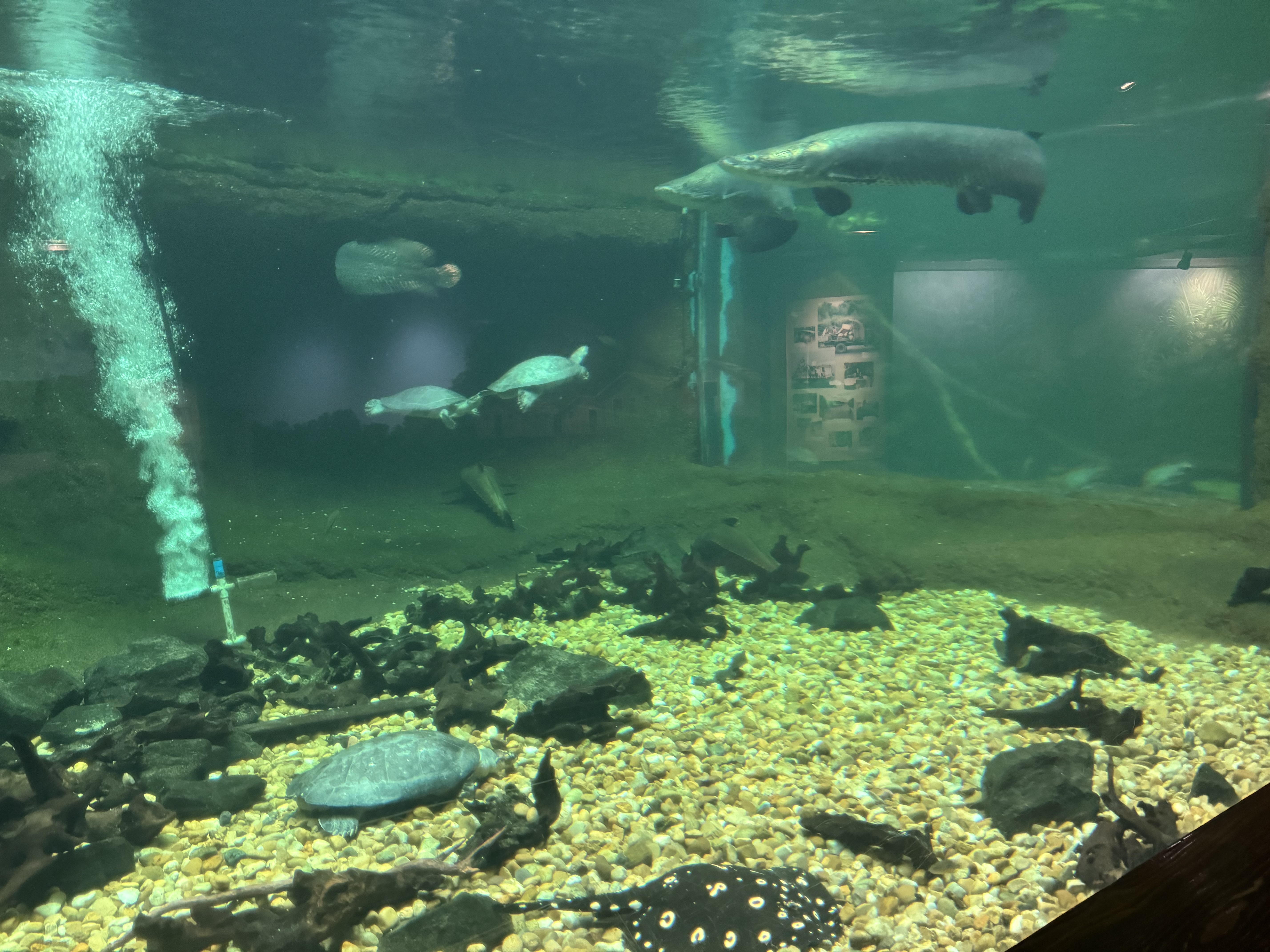Field Trip to the Smithsonian Zoo
May 5, 2024: Washington DC
Amazonian Tour
This exhibit seemed to be aimed toward older age groups, possibly high school and above. A lot of the animals displayed were complex and possibly dangerous organisms, it would not be ideal to have young children wandering around, especially in the greenhouse where the animals were free to roam. There was also the exhibit on coral conservation and amphibian conservation that deals with a more serious and intricate topic. It was not a simple gallery walk where you admired the organisms, but a way to inform the visitors about the issue in the diverse ecosystem and explain how the zoo is working to help it. I noticed a lot of individuals reading the information on the plaques. The zoo provided a lot of detail and got into some scientific facts on the plaques that caught the attention of visitors. There were a few replicas of Amazonian River species like the Pink River Dolphin and Electric Eel. Additionally, the walls were covered in murals of the Amazon Rainforest and contained bits of information about the native tribes that reside there.
Small Mammal House
I noticed a lot of younger visitors at this exhibit. A lot of the animals were really cute and could catch the attention of young children. There was not a lot of information on the plaques displayed around the building. Even more, the facts presented were very easy to understand and contained a lot of graphics. The building seemed to lack additional interactive displays. I believe this exhibit is catered towards elementary schoolers. It seems like an ideal place to visit on a field trip. I saw parents pointing at the provided graphics to their kids and explaining the information in simple terms.
Animal Wellfare
I noticed that every habitat or enclosure tried to thoroughly replicate the natural environment of the animals. In the Amazonian building, it was incredibly humid and warm. There were humidifiers stationed over where the animals were and plants similar to the ones found in the rainforest were there as well. The greenhouse that replicated the rainforest was also a nice touch that made me feel like I was in the Amazon. In the Small Mammal House, they had a separate section for nocturnal animals with red lights. There were also a lot of hiding areas in the enclosures for the animals to rest in and get out of the spotlight. Overall, each of the animal's enclosures tried to include aspects of their natural habitat such as plants and terrain. The enclosures in the Reptile House included a sandy environment for the animals native to the deserts or drylands while the amphibians had very moist areas with small pounds and tons of greenery.
Education
Zoos are also places for rehabilitation and research on animals. When I was walking through the Amazonian and Reptile House, I saw various labs or caretaking centers for animals, especially endangered animals. The Amazonian had an entire display of endangered to near extinct organisms including the Panamanian Golden Frog. There was also a display about the coral and efforts to protect it from dying off. In general, having different exhibits on ecosystems throughout the world helps the public better understand the world around them. These offer snippets of information on how we humans affect the world and actions we can take to help. The zoo also the Animal Adventure Guide, where you can get more information about the animals and their lifestyles.
Photo Gallery

Meerkat standing!

Birds In the Amazonian Greenhouse

Arapaima in the Amazonian Exhibit


